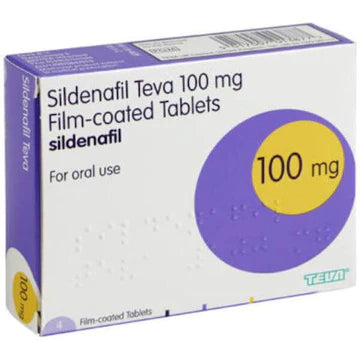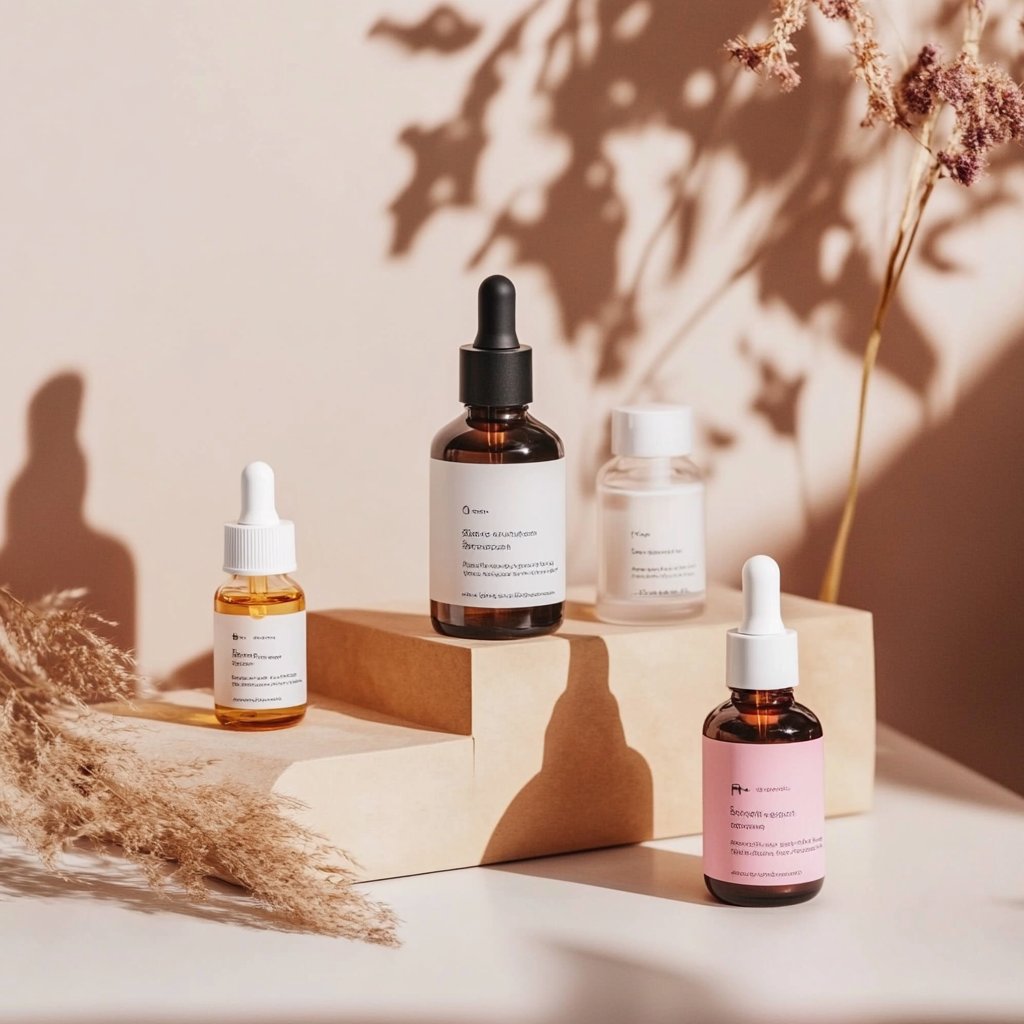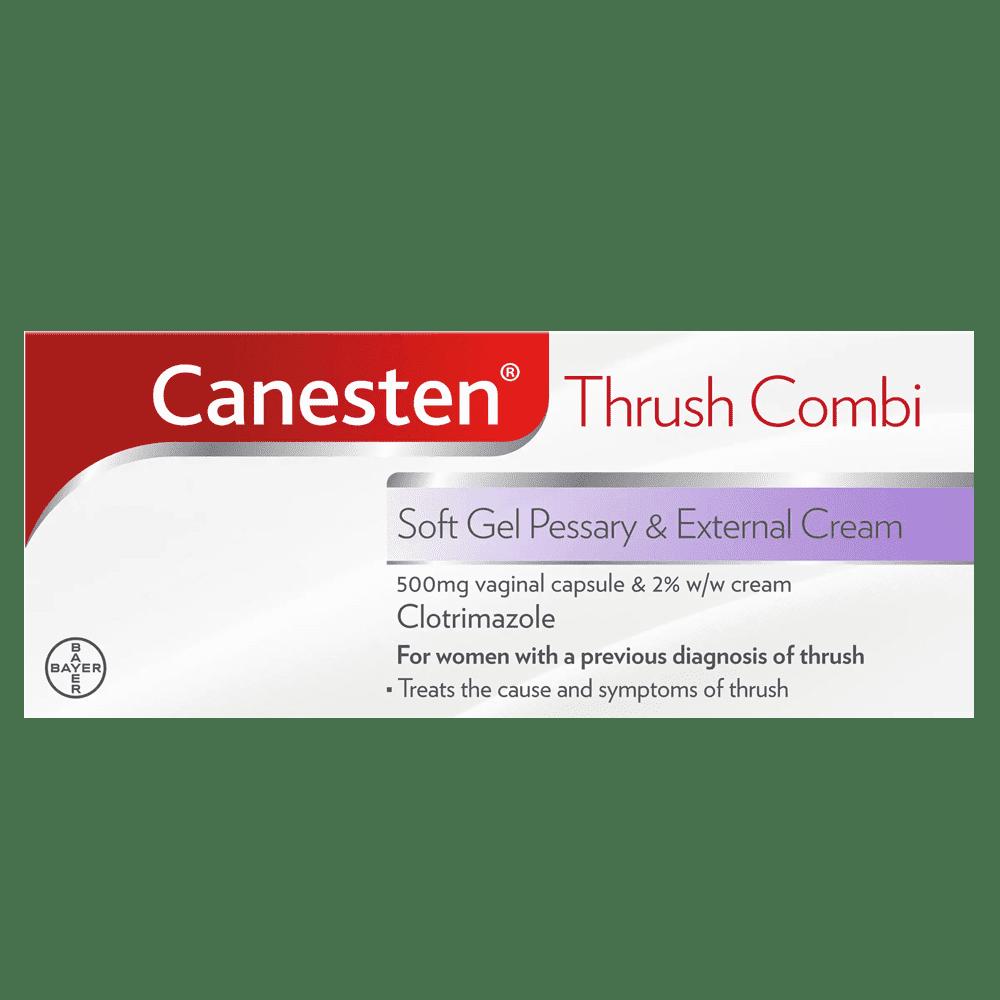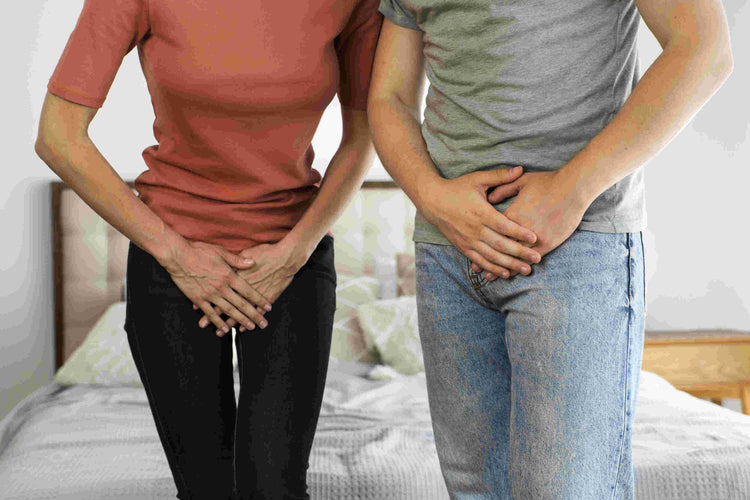Sexual Dysfunction: Definition, Cause, Symptoms, Types, and Diagnosis


Related products
Sexual Dysfunction Overview
Sexual dysfunction is a persistent problem with sexual activities related to sexual desire, pain and orgasm that prevent a person from experiencing enjoyable and satisfactory sexual activity. All causes of sexual dysfunction fall into two categories. It is either a response to the physical or psychological factors that influence the sexual response, sexual arousal, sexual intercourse and sexual organs. Depending upon the cause, there are various types of sexual dysfunctions. The disorders related to sexual desire, sexual fantasies or libido result in sexual aversion or indifference. A severe form is the hypoactive sexual desire syndrome (HSDD), which is either related to a particular sexual partner or a generalized condition affecting whole reproductive functions, temporary or persistent for life. It occurs in females (female sexual interest and arousal disorder-FSIAD) and males (male hypoactive sexual desire disorder-MHSDD).
Some sexual dysfunction in males is associated with erectile dysfunction (ED), delayed ejaculation, premature ejaculation or anejaculation (no ejaculation). In females, it is due to poor vaginal lubrication, vaginal inflammation, poor vaginal dilation and poor sensitivity of the reproductive organs. Both genders experience various issues that cause sexual dysfunction, e.g., anorgasmia (absence of orgasm), postcoital dysphoria, postorgasmic illness syndrome, etc. Likewise, sexual pain disorders, e.g., dyspareunia (difficulty or pain during sexual intercourse), vaginismus (spasmodic contractions of the vagina during sexual intercourse) and vestibulodynia (severe and chronic vulvar pain) in females and orgasmalgia or dysorgasmia (painful ejaculation) in males cause sexual dysfunction. Some other physical causes are cardiovascular diseases, hormonal changes, neurological factors, metabolic diseases, and some tumours. The main psychological factors are anxiety, depression and post-traumatic stress disorder (PTSD).
The symptoms depend upon the type of problem. Some common symptoms noted are poor sexual desire, a lack of interest and will to engage in sexual activities, difficulty or total inability to achieve or maintain arousal, difficulty in achieving orgasm and severe pain during sexual activities. The additional complications give rise to more severe signs.
The diagnosis needs a careful approach, and many healthcare professionals, e.g., psychologists, endocrinologists, neurologists, gynaecologists and urologists, must work together to find the cause. The physical examination by manual observation or by using instruments is beneficial. To find out the emotional and psychological factors, the healthcare professionals ask questions about drug abuse, sexual traumas in the past and sexual practices and attitudes. Some tests, e.g., blood tests, hormonal profile, transvaginal or penile duplex ultrasound and magnetic resonance imaging (MRI), help to discover some physical causes. Treatment of physical and psychological factors differs, and a combination of different options is mainly employed.
What is sexual dysfunction?
Sexual dysfunction is a pathological condition in which a person experiences issues related to sexual arousal, sexual preferences, orgasm and sexual pleasure. It is a broad term and has different meanings for different people. The inability of a person to engage in sexual activities according to desire and the inability to maintain a state of physical, mental, emotional and social well-being about sexuality, according to WHO. The broader nature of the definition makes it subjected to different interpretations.
The symptoms and issues are experienced during all stages of the sexual response cycle, i.e., excitement, stability plateau, orgasm and ultimate resolution, and it becomes very difficult to have satisfying sexual intercourse. People of all ages experience the condition. However, the frequency of problems increases rapidly after 40 due to a general decline in reproductive functions due to ageing. Sexual dysfunction is widespread, and a population study by Rosen in 2000 noted that it is experienced by 31% of men and 43% of women.
What is the cause of sexual dysfunction?
Many physical or emotional factors cause a person to become sexually dysfunctional. Understanding both types of factors is essential to understand the cause of sexual dysfunction.
Emotional factors
The emotional factors are psychological or interpersonal and include psychological disorders, negative cultural attitudes towards sex, sexual traumas in the past, fears or guilt related to sex and depression and anxiety, says Stanley Althof and Rachel Needle. The problem is more common in people with anxiety disorders. Anxiety increases the risk of erectile dysfunction and pain during sexual intercourse, and panic disorders cause a person to experience premature ejaculation and avoid sexual intercourse. In women, some psychological issues, e.g., those experienced during menopause, postpartum period, pregnancy menstrual syndrome, etc., negatively influence sexual desire.
Physical factors
Various physical factors are responsible for sexual dysfunction, e.g.,
Drug abuse: Some drugs, e.g., psychotherapeutics, antihistamines, antihypertensive drugs, stimulants, narcotics, nicotine and alcohol, cause sexual dysfunction. The selective serotonin reuptake inhibitors (SSRIs) used to treat depression are among the essential causes, and 58% of the users report sexual dysfunction among the side effects, says Rosen (2003).
Erectile dysfunction: Erectile dysfunction in the male partner is among the major causes of sexual dysfunction in the case of heterosexual partners. It causes several cascading effects, e.g., poor body image, performance anxiety, etc., that lower sexual desire in males. It is a significant factor, given that more than 20% of men in the UK sometimes struggle with ED.
Ageing: The vagina becomes atrophied and narrowed in aged women, resulting in painful sex and less desire. The vaginal lubrication becomes insufficient in old age, which adds to the miseries. Likewise, in older men, the working ability of erectile tissues is reduced. Sexual disabilities have been prevalent for the past 40.
Inconsistent sexual life: For women who don't regularly engage in sexual activities, particularly those involving vaginal penetration, the penetration of the penis comes at the cost of heavy pain and injuries. It starts a vicious cycle that ultimately results in poor sexual desire in women.
Cultural attitudes towards sex: The perception of sexual dysfunction varies from culture to culture. For example, some societies (e.g., American and Asian) view it as a problem that needs treatment, while others, e.g., Latin Americans, accept it as a normal part of the ageing process and don't opt for treatment.
Miscellaneous physical causes: The other physical and pathological causes are back injuries, enlargement of the prostate gland, poor blood supply, damage to the local nerves due to diabetic neuropathy, sexually transmitted infections like syphilis, tumours, multiple sclerosis, failure of organs, e.g., lungs and heart, endocrine issues related to adrenal, pituitary and thyroid glands, hormonal deficiencies, and congenital disabilities.
What are the symptoms of sexual dysfunction?
Sexual dysfunction causes several signs and symptoms, which depend upon the causative factors and gender.
Sexual Dysfunction In Women
Some common signs of sexual dysfunction in the females are;
Vaginal dryness: It results from hormonal changes associated with Menopause and breastfeeding. The incidence increases with age, and 19.3% of women in the early postmenopausal period (42-53 years) and 34% in the later years (57-69 years) experience vaginal dryness, according to a study published in Menopause. The vaginal dryness and the associated vaginal atrophy cause up to a 95% decrease in oestrogen production, which is responsible for maintaining the internal environment of the vagina. Vaginal dryness makes sexual intercourse painful, and women tend to avoid it unless lubricants are used.
Low sexual desire: It occurs due to a decline in the levels of hormones with age. Sometimes, the issues associated with sexuality, e.g., severe pain due to lower lubrication and vaginal injuries, cause poor sexual desire. The other issues responsible for the lower libido are lower blood pressure, diabetes, uneasiness, depression, hormonal contraceptives and the use of antidepressants. It is not just a sign of old age Acc. According to a study conducted at Monash University, Melbourne, Australia, around 25% of girls aged 18-24 experience lower libido.
Painful sexual intercourse: A regular sex involves penetration through a narrow vaginal opening. The body uses lubrication and dilation of the vaginal muscles to create more room. The loss of vaginal lubrication and vaginal dryness makes the process very painful. It is experienced in certain other reproductive conditions, e.g., vaginismus, endometriosis, ovarian cysts, surgeries, haemorrhoids, adenomyosis, pelvic floor dysfunction, irritable bowel syndrome, uterine fibroids, retroverted uterus, uterine prolapsed, pelvic inflammatory disease and psychosocial disorders (NCBI, 2023).
Poor sexual arousal: It occurs due to inadequate stimulation or psychological factors, e.g., anxiety and depression. For some women, the pain and dryness during sexual activities make it harder to turn on. Some other risk factors are Menopause, perimenopause in women pre, mature ejaculation and erectile dysfunction in men. Inadequate sexual arousal causes women to become less cooperative in sex and make the process less enjoyable for both partners.
Troubled orgasm: Orgasm is the culmination of sexual intercourse; proper orgasm is necessary for a satisfactory windup. However, some factors cause it to become problematic. For example, it is noted that orgasm problems are experienced by 5% of perimenopausal women. The other major causes are chronic diseases, certain medications, e.g., the medications used for anxiety and blood pressure, insufficient foreplay and anxieties during sexual intercourse.
Vaginal tightness: Vaginal tightness (or vaginal stenosis) is a severe sexual health issue. While it is normal to experience some level of tightness and tone of the vaginal muscles, excessive tightness causes pain and discomfort during sex. It makes the otherwise enjoyable penetration difficult and badly impacts sexual health and satisfaction. It occurs due to poor arousal, stress, anxiety, tension in the pelvic floor muscles, poor arousal and the conditions like vaginal injuries, surgeries and infections.
Fear of sexual intercourse: Sexual phobia, sexual aversion or just the fear of sex indicates the presence of emotional or psychological issues that disrupt the ability to engage in and enjoy sexual activities. It results from past traumatic sexual memories, e.g., rape, sexual assaults and incest, relationship problems and anxiety. The other issues, e.g., vaginal spasms and vaginal dryness, are responsible too. The sense of sexual inadequacy causes a person to feel embarrassed in front of a partner and avoid sexual activities.
Spasm of vaginal muscles: Vaginismus, or the spasm of vaginal muscles, is a condition in which involuntary contractions in the muscles of the vagina make penetration very difficult or painful. It is caused by physical causes, e.g., tensions in the pelvic floor muscles or psychological issues, e.g., negative beliefs and thoughts about sex and traumatic sexual memories. It causes emotional distress and reduces a person's ability to engage in sexual intercourse.
Sexual Dysfunction In Men
The signs of sexual dysfunction in men are related to sexual desire, arousal, erection, ejaculation and orgasm. Some essential signs are;
Poor libido: There is a substantial decrease in sexual desire and interest. The previous interest and motivation in the sex is lost. Besides the physical causes, a sense of physical inadequacy causes a man to lose interest in sex and avoid the partner.
Erectile dysfunction (ED): It is the inability to achieve and maintain an erection for a sufficiently long time to allow sexual intercourse. Poor erection makes sex a bad experience, and such a man likes to slip away from sex. It is a prevalent cause, as the British Association of Urological Surgeons has noted that 50-55% of men in age groups 40-70 years reported experiencing ED.
Premature ejaculation: It is the ejaculation that happens earlier than desired and results in poor sexual satisfaction for one or both of the sexual partners.
Delayed ejaculation: Men rarely find it challenging to achieve ejaculation after Sexual activities. It causes partners frustration, discomfort, and uneasiness, as ejaculation is needed for a successful conclusion. It has a high prevalence of 20-40% in the UK.
Anorgasmia: It is the inability to achieve orgasm despite being engaged in sexual activities for a long time. It affects sexual excitement and enjoyment and results in poor satisfaction. It is a sign of sexual dysfunction disorders, e.g., hormonal imbalances, nerve damage, use of certain medications and anxiety and depression (Lawrence Jenkins, MD).
Painful sexual intercourse: The discomfort and pain during sexual intercourse, a condition known as dyspareunia, develops in sexual dysfunctions. It is a consequence of physical and psychological factors, and both types are often involved.
Poor self-esteem and confidence: Due to cultural perceptions, particularly in the traditional segments of society, sexual power is linked to manliness and adds to the self-esteem and confidence in men. An inability to perform sex successfully causes distress and feelings of inadequacy and negatively impacts the confidence and self-esteem of men and women alike.
Relationship issues: In the long run, and sometimes the immediate consequence of sexual dysfunction are relationship issues. A struggling relationship often has a sexual problem in the background. Sexual dysfunction strains the relationships, causing communication gaps, emotional distances and frustrations.
Depression and anxiety: Sexual dysfunction leads to psychological issues, e.g., depression and anxiety. Depression and anxiety add to the sexual dysfunction, and the vicious cycle continues. A group of researchers in India noted in 2018 that 62.5% of people with depression reported sexual dysfunction.
Exacerbation of health conditions: Chronic health conditions, e.g., neurological conditions, hormonal imbalances, heart diseases, diabetes, etc., need emotional motivation and support. Sexual dysfunction adds to discomfort and compromises all factors, thus increasing the severity of health conditions.
Psychological issues: Sexual dysfunction causes or adds to the already present psychological issues, e.g., performance anxiety, body image anxiety, phobias, depression, etc. The relationship between sexual dysfunction and psychological health is cyclic.
Lifestyle issues: Sexual dysfunction and the associated physical and emotional consequences cause a person to resort to unhealthy habits, e.g., lack of physical activities, drug abuse, smoking and alcohol consumption, which further adds to the problem.
In short, sexual dysfunction impacts the overall well-being of a person irrespective of gender. It is essential to sort out the cause and seek professional help to root out the problem.
What are the Types of Sexual Dysfunction?
The types of sexual dysfunction are classified into four major groups: disorders related to sexual desire, sexual arousal disorders, pain disorders and orgasm disorders. There are fields in medicine called gynaecology and andrology which study sexual dysfunction in women and men, respectively.
Disorders of sexual desire
The disorders of sexual desire cause poor libido and lack of appetite for sexual activities and sexual fantasies. A severe form in the females is the hypoactive sexual desire disorder (HSDD). It is either a specific condition related to a particular sexual partner or a generalised condition that influences the sexual appetite. Sometimes, the condition develops after a period of normal sexual functioning, while for some people, it is a congenital issue. Several causes and factors are responsible, but there is a decrease in oestrogen in women and testosterone in all genders in the background.
Various causes of poor sexual desire are the use of certain medications (e.g., antidepressants like serotonin re-uptake inhibitors SSRIs), pregnancy, fatigue, ageing and psychological issues, e.g., anxiety and depression. In some cases, the relationship issues, e.g., infidelity, reduce the sexual interest in a specific partner. Despite numerous causes enlisted in the literature, only a few have been studied in large-scale studies.
Disorders of sexual arousal
Importance in males and frigidity in females are the common conditions associated with poor sexual arousal. However, with the attachment of social stigmas to such terms, they are replaced by less personal and judgemental terms, i.e., erectile dysfunction in men and many related terms in women that result in lack of orgasm, painful sexual intercourse, poor sexual arousal and sexual desire. Both men and women experience a complete avoidance or aversion to sexual activities. Men experience a lack of sexual excitement, a lack of pleasure in sexual activities and a complete or partial failure of erection.
Some physiological issues, e.g., poor vaginal lubrication, chronic diseases, relationship problems and decreased blood flow to the reproductive organs, are responsible. Some common disorders of sexual arousal are;
Postorgasmic illness syndrome (POI): It is a rare condition that causes flu-like symptoms immediately or within hours after ejaculation. The symptoms include fever, fatigue, muscle pain, weakness, itchy eyes, aphasia, nausea, headaches, palpitations, rapid breathing and paraesthesia during sexual arousal. The symptoms often persist for days and negatively influence sexual desire. It occurs due to unknown causes and is related to autonomic nervous and immune system defects. No treatment is available, and it is sometimes mistakenly related to psychological issues, e.g., sexual anxiety.
Erectile dysfunction (ED): ED or impotence is a sexual health issue characterised by the inability to achieve and maintain erection for a sufficiently long time to allow successful sexual intercourse. It results from various underlying issues, e.g., chronic conditions, anatomical abnormalities, drug abuse, hormonal deficiencies, and psychological factors. Most of the causes are treatable, while others cause permanent loss of erection.
Different chronic diseases associated with erectile dysfunction are spinal cord injuries, vascular diseases, kidney failure, diabetes, multiple sclerosis and cardiovascular diseases, which disrupt blood flow towards the penis. On the anatomical front, the damage to the local nerves delays or prevents an erection. Vascular diseases, e.g., atherosclerosis, are the risk factors for ED and cause impaired blood flow to the penis, hypertension and peripheral vascular disease.
Drug abuse is among the major causes of ED. The people who use antipsychotics, antidepressants, antihypertensive drugs, antacids, narcotics and sedatives and drink alcohol are at the risk of ED. Hormonal deficiency is a cause, although a rare one, at a young age. Some people, particularly those with Klinefelter's syndrome, chemotherapy, radiotherapy, and childhood exposure to the mumps virus, experience testicular failure and the resulting testosterone deficiency. The disorders of the adrenal gland, hypothyroidism, hyperthyroidism and brain tumours cause a chain reaction of hormonal changes that result in ED.
Pain disorders
Dyspareunia is the term used for painful sexual intercourse. It is a sign of different diseases, e.g.
Vaginismus: In vaginismus, there are involuntary spasmodic contractions of the vaginal wall. The cause of vaginismus is unknown. However, it relates to traumatic sexual memories, e.g., sexual abuse and rape.
Vulvodynia: In vulvodynia, a burning sensation is experienced during sexual activities. The exact cause is unknown. However, it seems to be associated with the skin of the vagina and vulva.
Poor vaginal lubrication: Poor vaginal lubrication due to hormonal imbalances and side effects of medications, e.g., sedatives, contraceptives, cardiovascular medications etc., cause vaginal dryness that causes insufficient stimulation and excitement. It is associated with hormonal changes associated with pregnancy, menopause and breastfeeding. Anxiety, fear of sexual activities, irritation, and dryness caused by contraceptive foams and creams are among the causes.
Structural abnormalities: Some structural abnormalities of the penis, e.g., Peyronie's disease, cause painful and difficult sexual intercourse. It causes the formation of thick fibrous bands that cause a curvature in the penis during erection. It has a high incidence, particularly in men over 40 years and a large-scale survey by Schwarzer and colleagues has noted a prevalence of 3% in the study areas. There is no definite cause. However, the risk factors, e.g., alcoholism, smoking, chronic vascular diseases, traumas during surgeries and genetic factors, have a role.
Priapism: It is a painful erectile condition that occurs with or without sexual stimulation. It occurs when the blood trapped in the penis is not drained. If timely treatment is not provided, it causes permanent damage to the erectile tissues. It is common in young people and those having medical conditions, e.g., sickle cell disease and using certain drugs, e.g., erectile dysfunction drugs at higher doses.
Disorders related to orgasm
Orgasm is a pleasurable and rapid release of neuromuscular tensions when a person is at the peak of sexual arousal. It is accompanied by vaginal contractions in women and discharge of semen in men (Merriam-Webster’s). Various conditions related to orgasm are responsible for poor sexual health, e.g.,
Anorgasmia: It is the total absence of orgasm after regular sexual intercourse. Occasional experiences are not an issue, and the clinical anorgasmia is characterised by having orgasm failures in 75% or more sexual encounters. Physical, pharmacological or psychological factors cause it. The main pharmacological factor is the antidepressants, particularly SSRIs, as they delay or eliminate the orgasm. The common physiological cause is menopause, as many women experience poor climax after menopause. The pathological causes are damage to the local nerves in the lower body, spinal cord injuries, prostate or genital surgeries, diabetic neuropathy and pelvic trauma.
Premature ejaculation: It is the ejaculation that occurs well before the satisfaction of the female partner. There are various definitions, but generally, an ejaculation occurring within 2-3 minutes of insertion of the penis into the vagina is considered premature ejaculation. The other accompanying issues are poor control of ejaculation, distress, and dissatisfaction for one or both partners. Previously, it was attributed to psychological factors only. However, recent discoveries have explored the deeper neurobiological basis of rapid ejaculation.
Postorgasmic illness syndrome (POI): The symptoms of POIs are experienced immediately after ejaculating or orgasm. Some common issues are sexual headaches that occur in the skull and neck during sexual activities, masturbation, and after orgasm; postcoital tristesse that causes anxiety and melancholy after sexual activities that lasts for hours; muscle pains after ejaculation that last for days to weeks and Dhat syndrome, a culture-bound condition reported by men in South Asia which causes loss of semen into urine and by nocturnal ejaculation and causes dysphoria mood and anxiety after sex. The miscellaneous symptoms of POIs are fatigue, weakness, muscle pain, fever, itchy eyes, nausea, aphasia, palpitations, headaches, rapid breathing and paraesthesia.

How to Diagnose Sexual Dysfunction?
Diagnosing sexual dysfunction needs close cooperation between patients and several healthcare providers, i.e., psychologists, endocrinologists, neurologists, gynaecologists and urologists. The medical professionals review the history of the case, including the current medical conditions, the treatments being used and the present clinical signs. A thorough physical examination is performed to observe any abnormalities in the structures of reproductive organs. The final diagnosis is based on laboratory tests. The typical steps are;
History: It involves a thorough review of the case history, start of clinical signs, review of other concurrent medical conditions, current or past use of drugs, monitoring of vital parameters, e.g., blood pressure and blood glucose levels and investigation of relationship and psychological factors.
Physical examination: It involves a thorough review of the external genitalia and associated organs, e.g., testes, penis, surrounding skin and muscles in the males and a pelvis and vaginal examination in females. Some specific tests for associated organs, e.g., digital rectal exam (DRE), are performed to diagnose prostate enlargement.
Psychological assessment: The psychologists ask questions, usually in the form of a structured questionnaire, to get an insight into the emotional, relationship and lifestyle issues, mood disorders and anxiety disorders responsible for sexual dysfunction. It involves thoroughly reviewing sexual attitudes and practices, sexual history, the relationship between parents, substance abuse, alcohol consumption and smoking. Once the initial assessment is reached, the laboratory tests are used to confirm the findings.
Blood tests: The blood tests are used to check the level of hormones, e.g., oestrogen and progesterone in women and testosterone in both genders. The hormones have a marked impact on sexual functions, and their falling levels are associated with sexual dysfunction.
Imaging tests: Imaging techniques, e.g., penile (penile duplex ultrasound) and pelvic ultrasound, are helpful to check the blood flow in the region. The transvaginal ultrasound helps detect the growths and other abnormalities in the female reproductive system. Neurologists often perform magnetic resonance imaging (MRI) scans to find changes and abnormalities in the central nervous system. Kenneth Maravilla and Claire Yang (2008) have found MRI helpful in diagnosing FSIAD.
Specialised tests for sexual health: These are less common but provide helpful information about reproductive health.
Nocturnal penile tumescence (NPT): It detects night-time penile erections. A penis with normal erectile functions undergoes erection 3-5 times during an 8 hours night sleep. An electronic device having two rings is used. One ring is placed at the base, while the other is placed at the tip of the penis. The device measures the duration, quality and number of night time erections.
Vaginal plethysmography: It is a device which uses light to measure the blood flow in the women's vaginal area of a sexually aroused or ordinary woman.
Consultation: If the is complex, the patients are referred to the concerned specialists for better evaluation, consultation and treatment. The concerned professionals are urologists who deal with sexual issues of men, gynaecologists who deal with women's reproductive health, and endocrinologists who deal with the hormonal factors associated with sexual health. Sex therapists deal with the attitudes about sex, and psychologists explore the psychological basis of sexual dysfunction.
Analysis of vaginal lubrication: If a female complains of vaginal dryness, the healthcare providers check the level of dryness and moisture in the vagina to prescribe lubricants.
Pap smear: The pap smear examination is used to diagnose cervical cancer and other issues related to cervical health that influence overall health.
During the diagnostic process, a patient must be open with the healthcare professionals about reproductive health to find appropriate solutions.
What are the Psychological Factors that Contribute to Sexual Dysfunction?
The psychological factors are closely linked to the sexual health. For example, around 40% of cases of erectile dysfunction have a psychological cause. Childhood trauma and sexual abuse change the perceptions about gender, intimacy and sex for life. The essential psychological factors are;
Stress: Any type of stress due to financial issues, loss of job, relationship issues and marital life issues contributes towards sexual dysfunction in both genders.
Anxiety: The relationship between sexual dysfunction and anxiety disorders is cyclic. As anxiety results in poor sexual performance, anxiety about similar failure in future sexual intercourse causes more sexual dysfunction. The fear of sexual intercourse, particularly in traditional societies, body image performance and performance anxiety are often experienced by men. A recent study published by the Department of Bioscience Education, King’s College London, in 2022 found that nearly half (46.2%) of people with PTSD and up to 36.2% with panic disorder experience ED.
Guilt: Guilt arises from various factors. Some religious societies negatively perceive sex, and the people engaged in sexual activities always feel guilty. Sometimes, a person feels sexually inadequate and unable to satisfy the partner. The feeling of guilt adds to the sexual issues.
Depression: Depression affects a person's psychological and physical health and is a leading cause of ED and other sexual dysfunctions. The drugs used for depression, e.g., SSRIs, cause sexual dysfunction as a side effect. An Indian study observed that a third (33.3%) of women and more than two-fifths (41.67%) of men with major depressive disorder experience poor sexual desire.
Loss of interest in sex: It is an age-related factor, and some men and women experience a lack of sexual desire and poor sexual functions with age. However, sometimes, the side effects of some medications and relationship factors are responsible for an indifferent attitude towards sex.
Poor self-esteem: It is experienced by people who have experienced sexual failures and are worried about sexual adequacy. It cyclically adds to sexual dysfunction. The condition becomes more severe if the partner is non-cooperative.
Fatigue: Fatigue negatively influences physical stamina and results in poor interest in sexual activities. Fatigue for any reason, e.g., excessive work, exercise, and laborious lifestyle, has an impact.
Traumatic past: Being subjected to sexual abuse, rape, incest, and childhood abuse badly impacts individuals' ability to engage in enjoyable and satisfying sexual relationships. Sexual avoidance is one of the significant signs of post-traumatic stress disorder (PTSD).
Relationship issues: Problematic relationships, poor communication with the partner, and conflicts cause poor sexual desire. Healthy relationships are among the critical requirements of a healthy sexual life.
Religious and cultural stigmas: Sometimes, the cultural and religious norms and values contradict a person's sexual fantasies, orientation and desires and cause feelings of shame, guilt and anxiety in the people, leading to a loss of sexual desire. For example, most religions forbid homosexuality and homosexual people in religious and conservative societies have to face social pressure. It is valid for people with all types of sexual orientation, which is different from the expected normal for a gender.
Performance pressure: The perceptions about social expectations related to sex and sexual pleasure and performance create pressure that influences sexual well-being.
Sexual health issues are closely linked, and often, a person has more than one issue. Therefore, consulting with the psychologist and concerned professionals is essential for better outcomes.
Who is affected by Sexual Dysfunction?
People experience sexual dysfunction irrespective of ethnic background, age and gender. The prevalence varies with the exposure to psychological risk factors, health conditions and age. In men, sexual dysfunction issues, e.g., poor libido, erectile dysfunction, delayed ejaculation, premature ejaculation and delayed or no orgasm, affect people of all ages. The risk and prevalence increase with advancing age. The sexual attitudes and behaviours of women are more complex, and issues, e.g., painful sexual intercourse, difficulty in achieving orgasm, poor arousal and poor sexual desire, are experienced in all ages.
A large-scale survey by Kristin Mitchell and colleagues in 2015 in the UK explored the incidence of sexual dysfunction in men and women. It involved 11,509 men and women aged 16-74. The participants had at least one sexual partner in the past year. It was found that 38.2% of sexually active men and 22.8% of sexually active women had at least one sexual dysfunction issue. Over a third of participants reported meeting all three morbidity criteria mentioned in the Diagnostic and Statistical Manual of Mental Disorders (DSM-5) and were seeking medical assistance in the past year.
An earlier study by Dunn and colleagues in 1998 found that 41% of women and 34% of men reported suffering from at least one sexual health condition. The most common issues reported by men were erectile dysfunction (21.5%) and premature ejaculation (11.5%). In the case of women, 19% of responders reported experiencing vaginal dryness, and 16% reported infrequent orgasms. More than half (52%) of people were willing to take professional help, but only 10% received such assistance.
In older adults, the prevalence of sexual health issues is higher, although it is not thought to be an inevitable result of ageing. It results from stresses experienced by older people in all domains of life. The experts have found a gender bias with women's sexual health showing more sensitivity to physical health than men's. Relationship dissatisfaction and mental health deterioration are observed in older age, which increases the risk of sexual dysfunction. A cultural taboo is responsible for the low reporting of sexual health issues in older people. The sexual behaviour of older adults becomes a target of ridicule and jocularity; thus, the elderly are more likely to hide information about sexual health.
Various negative changes associated with ageing, e.g., atrophy of sexual organs, low levels of sexual hormones, poor arousal and erection, and decline in the frequency and intensity of orgasm, are responsible for sexual dysfunction in old age. The women experience lower lubrication, thinning of vaginal mucosa, laxity of perineal muscles, thinning of pubic hair and shirking of labia.
What are the Treatments for Sexual Dysfunction?
The treatment of sexual dysfunction depends upon the cause and severity of the symptoms. Treatment aims to restore sexual pleasure and functioning. The treatments developed for different conditions are;
Poor sexual desire
Poor libido is the lack of sexual fantasies and interest in sexual activities. The treatment is a multi-step process and involves many protocols. First, the therapist engages in conversation with the patient to identify the negative sexual attitudes, discover the source of such ideas, and understand how the patient thinks about intimacy and sex. The therapists explore the patients' diaries, and the information about the erotic and sexual content searched by the patient is essential for the therapist to identify any relationship issues.
The treatment options are psychological counselling to address the psychological issues, e.g., psychological trauma, relationship issues, stress and anxiety; medications, e.g., bremelanotide (Vyleesi®) and flibanserin (Addyi®) and over-the-counter antidepressants e.g., bupropion; hormone replacement therapy (HRT) to restore the balance of oestrogen, progesterone and testosterone; lifestyle changes to reduce stress, improve sleep, eating a healthy diet and exercising regularly; improving the communication with the partner to communicate the sexual needs and desires and concerns; continuous monitoring and treatment of health conditions, e.g., diabetes and thyroid diseases; using alternative therapies, e.g., herbal products, yoga and supplements and resorting to self-help strategies, e.g., joining social support groups, reading valuable books, seeking support from the family and friends and keeping self-motivation.
Erectile dysfunction
The treatment depends upon the cause and severity of symptoms and the presence of other health conditions. The doctors prescribe the treatment after weighing the potential benefits with risks. The standard treatment options are;
Oral medications: Oral medications, e.g., Sildenafil (Viagra), Tadalafil (Cialis, Adcirca), Avanafil (Stendra) and Vardenafil (Levitra) improve erectile functions by increasing the life of nitric oxide the natural chemical that relaxes the muscles in the penis. The increased blood flow results in a more sustained erection in response to sexual arousal (Ian Eardley, Department of Urology, St. James University Hospital, Leeds, England).

Sexual arousal is required for such medicines to work. They are available in different dosages, which the doctor decides. The common side effects are stomachache, backache, visual changes, headaches, nasal congestion and flushing. The patients must consult the doctor in case of other health issues or use other drugs for better safety.
Injections and suppositories: The other medications are Alprostadil self-injection which is injected into the base or side of the penis; Alprostadil urethral suppository, containing a vasodilator which is placed in the urethra using an applicator and testosterone replacement therapy (TRT) which is used to restore the levels of hormones.
Non-medicinal options: Some non-medicinal treatments are penile vacuum pumps that create a vacuum to pull the blood into the penis, and then a tension ring is used around the neck of the penis to hold the blood; penile implants, which are placed surgically on both sides of the penis and are malleable rods that allow a person to control the erection; regular exercises particularly Kegel exercises and psychological counselling to treat the issues, e.g., stress, anxiety and depression.
Premature ejaculation
The treatment of premature ejaculation depends upon individual factors and the underlying causes. The standard approaches are;
Behavioural techniques: Some techniques help to prolong the duration of sexual intercourse. A helpful approach is to stop for 30 seconds when a person feels he is about to ejaculate and then resume again. Over time, it improves stamina and allows better control over the ejaculation. Another helpful technique is to squeeze the base of the penis for 30 seconds as a person feels he is about to ejaculate. It delays ejaculation.
Pelvic floor exercises: Pelvic floor exercises, e.g., Kegel exercises, strengthen the pelvic floor muscles and allow better control over ejaculation. It involves repeated contractions and relaxation of muscles that control urination.
Medications: The medications are helpful to treat some causes. For example, topical anaesthetics are used to numb the area, while antidepressants are used to treat depression if it is the cause. The commonly used antidepressant medications are escitalopram, citalopram, sertraline, paroxetine and fluoxetine. The drugs used for erectile dysfunction help treat premature ejaculation, too.
Psychotherapy: Sometimes, relationship issues and anxiety are responsible for premature ejaculation. Consultation with a counsellor or sex therapist is a valuable option to address such causes.
Lifestyle modifications: Some lifestyle changes, e.g., using relaxation techniques to manage stress, anxiety, performance pressure and stress management techniques, e.g., relaxation techniques, meditation, yoga, aromatherapy and regular exercises, are helpful.
A single treatment does not work for some people, and a combination of different options is recommended for better results. The patients must consult a sex therapist and the urologist to determine the best course of action according to the specific situation. The success of treatment plans depends mainly on the commitment and motivation of the person, and they are successful in the long run.
Painful sexual intercourse
Painful intercourse or dyspareunia causes significant stress during sex. In most cases, there is a physical cause, and the patients must consult the gynaecologist or urologist to rule out the cause. The women, in most cases, are trained in various relaxation techniques. The treatment depends upon the cause of the pain.
Infectious pain: In case the pain is due to bacterial, viral or fungal infections or sexually transmitted infections, a course of antibiotics, antifungal and antiviral drugs is prescribed.
Pain due to vaginal dryness: In case of vaginal dryness, the underlying causes, e.g., hormonal imbalance or use of certain medications, are managed. Topical oestrogen creams, hormone replacement therapy and water-based lubricants are used for symptomatic relief.
Pain due to psychological factors: Sometimes, the pain is due to dysfunction or tension in the pelvic floor muscles, and physical therapy of the pelvic region helps. If the pain is due to psychological factors, e.g., past traumatic memories, relationship issues, anxiety and stress, consulting the psychological and sex therapist is helpful.
Fibroids and endometriosis: If the pain is related to fibroids or endometriosis, the treatment options are surgeries, hormonal therapy and medications, depending upon the location of the pain and the severity of signs.
Allergic pain: Some people are allergic to the materials used in condoms, lubricants and other sexual products, and the allergic reactions cause discomfort during sex. Switching to non-allergic or hypoallergenic products is recommended if there are signs of allergic reactions, e.g. swelling of tongue, lips and conjunctiva, difficulty swallowing, skin irritation and respiratory difficulty.
Vaginismus: Physical therapy, exercises and counselling are required to handle vaginismus which is the involuntary contractions of the vaginal muscles during sex. Sometimes, the drugs are used to desensitise the vaginal muscles.
Structural abnormalities: Surgical corrections are done to address the structural abnormalities.
The important thing is to have open communication with the healthcare professionals to allow a better response to any causes.
Vaginal dryness
There are several ways to treat and manage vaginal dryness, and the choice depends upon the individual likeness and recommendations of the healthcare professionals. Some standard methods are;
Using water-based lubricants: The water-based lubricants have water as a significant ingredient. They improve comfort and reduce friction during sexual intercourse. They are oil-free, compatible with most sexual activities, safe and have a lower risk of allergies. They are non-sticky, easy to clean up and are available in a variety of different formulations. Examples are Skins Aqua Lubricant, Skins Watermelon Lubricant, Skins Strawberry Lubricant, Pasante Gentle Light Lubricant and K-Y Jelly. They are less long-lasting than silicone-based lubricants and are unsuitable for some activities, e.g., shower sex.
Staying hydrated: Dehydration is among the causes of lower lubrication. So, staying hydrated by drinking a lot of water is helpful to manage vaginal dryness.
Using vaginal moisturisers: Several types of vaginal moisturisers are available over the counter, e.g., Replens™ Moisturiser and Boots Vaginal Moisturising Gel. They must be used regularly to improve moisture in the vaginal tissues.
Topical oestrogen creams: Oestrogen influences the vaginal tissues and causes vascular remodelling and proliferation of the vaginal epithelium. In the postmenopausal phase, the oestrogen levels fall. The oestrogen tablets and creams are available that contain lower doses of oestrogen and are applied locally to improve elasticity and lubrication.
Avoid products containing irritants: Scented products, douches and harsh soaps must be avoided as they cause dryness or worsen already present dryness.
Medications: If the vaginal dryness is due to health conditions, e.g., stress, depression, perimenopause and menopause, consultation with healthcare for therapies and prescription medications is necessary to address the underlying cause.
Lifestyle modifications: Some lifestyle changes, e.g., eating a healthy and well-balanced diet, reducing stress levels, quitting smoking and reducing alcohol consumption, help improve vaginal health.
Improve relationships: Vaginal lubrication is linked to relationship chemistry. Complete physical harmony between partners improves stimulation, excitement and arousal, causing the release of more lubricants. Check for any issues plaguing the relationship and try to resolve such issues.
Exercises: Pelvic floor exercises, e.g., Kegel exercises, help improve the blood flow into the pelvic area and help improve vaginal lubrication.
If the dryness persists despite all measures, the patients must consult the healthcare provider as it is a sign of health conditions that need more robust treatment.
What is the Impact of Sexual Dysfunction on Mental Health?
Sexual dysfunction includes various issues that reduce a person's ability to have satisfactory sexual intercourse. Sexuality and sexual power are associated with social and cultural stigmas, and such a person experiences a lot of mental health conditions. The mental health consequences are;
Poor self-esteem and psychological distress: The inability to engage in satisfactory sexual intercourse and fulfil the sexual needs of the partner causes frustration and increases the risk of anxiety and depression, and nearly two-thirds (62.5%) of depressed people experience sexual dysfunction. It causes a negative self-image by eroding self-worth and self-esteem.
Performance pressure and anxiety: Sexual dysfunction and fear of failing in sexual activities cause negative feelings. The resulting stress causes many negative self-fulfilling concerns. When coupled with the social pressure to perform, it causes severe anxiety that further exacerbates the situation, causing more problems.
The strain on relationships: Intimate relationships revolve around sexual functions. Sex improves communication and reduces the chances of conflicts. The presence of sexual dysfunction in one or both of the partners results in the breakdown of intimacy and communication. It results in disputes and potential break-ups. The development of emotional distance greatly strains relationships, and such couples have higher divorce rates.
Social isolation: People with sexual dysfunction feel inadequate and deficient and try to avoid social and sexual activities. Such people tend to slip away from potential partners and avoid dating and other social interactions. Moreover, due to the social stigmas associated with sex, such people are hesitant to talk and share issues with others. All such factors result in a sense of shame and social isolation.
Poor sense of identity and gender roles: A person with sexual dysfunction is likely to have poor self-identification and often struggles with gender roles. Society links sexuality to femininity and masculinity, and failing to engage in sexual relationships makes it difficult to agree to one's gender identity. Such people struggle to find partners.
Substance abuse to cope with stress: Some people resort to unhealthy coping mechanisms, e.g., drug abuse, alcoholism, and smoking, to handle the frustration and anxiety caused by sexual inadequacy. Substance abuse temporarily relieves stress but causes addiction and adds to the severity of physical and psychological health conditions. Substance abuse adds to the severity of sexual dysfunction, as sexual dysfunction was reported by 61% of opioid addicts and 75% of alcohol addicts, according to a recent study published in India.
Poor quality of life: Sexual satisfaction and intimacy are among the most critical aspects of overall well-being. A persistent sexual dysfunction causes a feeling of inadequacy, and the person becomes dissatisfied with life. It, coupled with a sense of isolation, erodes the quality of life.
Predisposition to other mental health issues: Sexual dysfunction has a cyclic relationship with other mental health conditions, e.g., depression, anxiety and post-traumatic stress disorders. It is a consequence of such diseases and adds to their severity. It complicates the cycle of mental health conditions, and there is a need for more comprehensive treatment.
Delays in seeking help: As a person with mental health conditions is not willing to accept reality, a person with sexual dysfunction is sometimes unwilling to get help due to the social stigmas associated with sex and the fear of being embarrassed. It causes more severe symptoms and reduces treatment efficacy when it is finally sought.
So, the impact of sexual dysfunction on mental health is multifaceted and profoundly deep. The exposure to various risk factors and the potential to resort to unhealthy coping mechanisms creates a vicious cycle of mental health conditions that persist for a long and need more comprehensive treatment. Recognising such grave consequences by the community and healthcare providers is essential to providing effective and compassionate support to the patients. Destigmatising the issue, early recognition and provision of early and comprehensive care are necessary to address the mental health consequences of sexual dysfunction.
How Can Sexual Dysfunction Be Prevented?
There are a lot of ways that are helpful to maintain a healthy and enjoyable sexual life and prevent sexual dysfunction. The key is to stick to the plan for a long time and get professional help in case of any issues. Some valuable options are;
Quit smoking: Smoking increases the risk of various health conditions, e.g., stroke, lung cancer, blood and heart diseases that compromise the blood supply to the reproductive organs and the reproductive functions. A group of researchers at the University of Illinois, John Hopkins's Medicine and Cedars-Sinai Medical Centre found that as compared to non-smokers, smokers have a higher risk of ED (31.6% vs. 26.0%) and lower libido (25.6% vs. 21.0%). The current smokers showed higher total testosterone than non-smokers.
Cigarette smoke has many chemicals, e.g., carbon monoxide and nicotine, that damage the blood vessels and lower the blood supply and nutrients to the reproductive organs. Nicotine in cigarette smoke disturbs testosterone levels, causing poor sexual desire. A person concerned about sexual well-being must leave smoking through a long-term plan as it harms the heart and sexual organs. Smoking cessation has significant benefits for reproductive health.
Avoid alcohol and drug abuse: Alcoholism and drug abuse adversely affect sexual functions. Excessive use disrupts the blood flow and hormonal levels, causing poor libido and erectile dysfunction in men. Too much alcohol damages the liver and disrupts the blood flow towards the genitals. It suppresses arousal and sexual stimulation by suppressing the nervous system. The sensitivity of the vagina and penis to erotic stimuli is reduced, leading to less pleasurable sessions and poor quality and intensity of orgasm.
Drug abuse and alcohol consumption increase the secretion of angiotensin, which is associated with high blood pressure and erectile dysfunction. That's why studies have found that men and women consuming alcohol have a 27% and 74% higher risk of sexual dysfunction, respectively (BMC Women's Health, 2025). Some illegal drugs, e.g., methamphetamine and cocaine, reduce the blood supply to the penis by constructing the blood vessels. Long-term drug abuse causes severe sexual dysfunction by lowering the supply of oxygen and nutrients to the reproductive organs due to reduced blood supply.
Improve physical activities: A sedentary lifestyle is a considerable risk factor and strongly correlates with sexual dysfunction. It increases the risk of diabetes, obesity and cardiovascular diseases linked to sexual dysfunction. A sedentary lifestyle negatively affects the hormone levels and blood flow towards the sexual organs. A group of researchers at Emory University, USA, found that as compared to physically active people, people with a sedentary lifestyle have a higher risk of ED (44.4% vs. 21.6%), poor sexual satisfaction (59.3% vs. 35.3%) and poor orgasm functions (44.4% vs 17.7%).
So, spending more time on physical activities and avoiding long sitting times is essential. There are several ways to achieve it. One crucial way is regular exercise, as it improves overall health and lowers the risk of various chronic diseases. The research has found that 30 minutes of regular workout five days a week effectively manages erectile functions in males, and the participants noticed improvement within six months.
Exercise helps control various risk factors of sexual dysfunction, e.g., diabetes, obesity and cardiovascular diseases. Activities like high-intensity interval training (HIIT), swimming, cycling and running are very effective. The exercises that target the pelvic region, e.g., Kegel exercises, are beneficial for premature ejaculation and erectile dysfunction. The tight working schedules and modern lifestyle have increased sitting time, detrimental to overall health and wellness. Sitting for extended periods increases the risk of issues, particularly obesity, which is linked to type-2 diabetes. The use of sit-stand desks is a helpful option for such people.
Eat a healthy and balanced diet: Diet is vital for sexual health. The studies have confirmed that poor dietary practices are linked to poor sexual well-being, and a good diet is helpful to prevent such issues. Diets containing cholesterol and processed sugars are associated with poor vascular and, ultimately, sexual health, while diets containing healthy fats, vitamins, proteins, antioxidants and good cholesterol improve sexual functions.
Some diets, e.g., Mediterranean diet, are associated with high sexual performance and lower risk of erectile dysfunction. The Mediterranean diet contains fruits, vegetables, fibre and healthy fats, e.g., olive oil and whole grains. Foods containing flavonoids and other antioxidants are known to be aphrodisiacs, lower the risk of ED, and improve sexual desire. So, wise and well-balanced dietary choices help reduce the level of sexual dysfunction due to any reason.
Stress management: Stress causes sexual dysfunction in men and women alike. High levels of continuous stress activate the sympathetic nervous system, which diverts the mental and physical strengths to combat the stress and lowers the focus on leisure activities, e.g., sex. It increases Cortisol levels and reduces the production and levels of reproductive hormones, lowering the libido.
So, adopting stress management techniques, e.g., practising meditation practices, e.g., deep breathing, practising yoga, getting adequate sleep and spending some time regularly on exercises help lower the risk of sexual dysfunction. The research found that couples using an online stress management program for 12 weeks experienced significant improvement in the female sexual function index and sexual distress score (Jordan E. Rullo. PhD).
Keep an eye on testosterone levels: Testosterone is the primary sexual hormone in men, and its fluctuations are responsible for sexual dysfunction. The blood tests to regularly check its levels and take appropriate measures in case of falling levels help safeguard sexual health. The normal testosterone level in men must be 350-750 ng/ dL and in women 15-70 ng/ dL. Taking testosterone-boosting supplements, e.g., zinc and vitamin D supplements and adding more hormone-friendly foods to the diet plan are beneficial.
Keep open communication with the partner: Honest and open communication about sexual fantasies, needs, and desires reduces anxiety, stress and performance pressure associated with sexual activities. It boosts mutual understanding and lets the partners know each other's desires and expectations.
Use safe sex practices: Safe sex practices, e.g., regular screening for sexually transmitted infections and use of condoms and dental dams for oral sex, help safeguard reproductive health. Such practices are particularly useful for people having more than one sexual partner.
Manage the medications: Some medications, e.g., anti-depressants, cardiovascular medications, blood pressure medications, H2 Blockers, hormones, antipsychotics, opioids, Statins and antiepileptic drugs, sometimes cause sexual dysfunction as a side effect. If any such drug is expected to be responsible, consult the doctor to choose safer alternatives. The patients must not leave drugs on their own.
Avoid watching pornographic content: Pornographic content is a rapidly emerging cause of sexual dysfunction as it desensitises a person to erotic stimuli and creates unexpected sexuality. A high frequency of pornography is associated with higher risk. Damiano and colleagues found in 2015 that the risk of sexual dysfunction was 6% higher in people consuming pornography less than one time per week and 16% higher in people with people consuming pornography more than 1 time per week. If a person has a habit, it is beneficial to reduce it gradually.
The sexual dysfunction sometimes persists despite all efforts to cure or treat it. In such cases, taking professional support and guidance is helpful to address the issue effectively.
Do Lifestyle Changes Help to Treat Sexual Dysfunction?
Yes, lifestyle risk factors have an essential role in the causation of sexual dysfunction and addressing such factors helps treat it. Some useful lifestyle changes are;
A healthy diet and regular exercise: Spending time regularly on exercises and eating a healthy diet improves overall physical and mental health by lowering stress and improving blood circulation. It ultimately improves sexual health.
Stress management: Anxiety and stress cause high Cortisol levels and suppress reproductive functions by activating the sympathetic nervous system and lowering the levels of sexual hormones. Therefore, deep breathing, yoga, meditation and other stress management techniques help boost reproductive health.
Avoiding alcoholism and drug abuse: Recreational drugs, e.g., caffeine, nicotine, cannabis and alcohol, suppress nervous mechanisms involved in sexual performance. So, leaving them helps improve sexual health. Likewise, smoking disturbs the blood flow into the penis by damaging the blood vessels and reducing the body's oxygen supply by compromising respiratory functions. Smoking is thus a good favour to reproductive health.
Management of health conditions and medications: Managing diabetes, obesity, hypertension and other health conditions is very important. Likewise, sometimes sexual dysfunction is a side effect of medications. The patients must check and consult the doctor if needed.
Take healthy sleep: Poor sleep causes poor libido and fatigue. Sleeping for 7-9 hours daily improves overall health, including sexual health.
Foster better communication and healthier relationships: A person must be honest and open about the relationship issues and maintain a high level of communication and emotional attachment with the partner to manage the condition better.
Various lifestyle changes are helpful, but their effectiveness varies from person to person and depends upon a person's health status. A better option is to consult the doctor for diagnosis and treatment and use lifestyle changes to supplement the efforts.
Do Therapy Treats Sexual Dysfunction?
Yes, many therapeutic options are available which are very effective in treating sexual dysfunction. The common therapeutic options are;
Psychotherapy: One common therapeutic option is Psychotherapy, which addresses the psychological causes of sexual dysfunction. Examples are psychoanalytic and cognitive behavioural therapy (CBT), which address the psychological and emotional causes of sexual issues. The psychotherapy explores the feelings, thoughts and beliefs linked to the sex.
Sex therapy: It is a specialised therapy to address sexual health issues. A sex therapist engages with one or both partners to identify sexual issues and concerns and educate about various techniques to improve sexual functions.
Trauma therapy: Sometimes, sexual dysfunction is related to past trauma and memories. Trauma therapies, e.g., eye movement desensitisation and reprocessing (EMDR) and exposure therapy, help people heal from past traumas and focus on the present.
Couple therapy: It engages both partners when sexual dysfunction is plaguing the relationship and helps save the relationship. It improves sexual health by allowing both partners to collaborate, communicate, discuss, and alleviate mutual concerns. It allows the partners to find mutual solutions to sexual problems and get help from the sex therapist.
Sensate focus and mindfulness: It helps couples and individuals by training them to tune their bodies better and align their emotions and sensations. It results in better sexual satisfaction for both partners (Julie Fregerslev Krieger, MD).
Therapy for performance anxiety: It trains people to handle the fear of sexual failures and trains them on coping strategies to handle performance anxiety during sex.
It is important to note that the success of each therapy is subjective and depends upon individual circumstances. Engaging in multiple therapies and combining psychological therapies with medications is better for better results.

Does Sexual Dysfunction Affect Relationships?
Yes, sexual dysfunction has a profound impact on relationships. Some effects on relationships are;
Poor connection and intimacy: Romantic and close relationships revolve around intimacy and communication. The presence of sexual dysfunction in one or both of the partners compromises physical intimacy, resulting in increasing emotional distancing and lower connectivity.
Communication issues: Many relationship issues are resolved during intimacies and sexual activities. Sexual dysfunction in one or both of the partners causes poor communication and allows misunderstandings to take hold. The embarrassment of being sexually deficient causes uncomfortable feelings, and a person hides true emotions. A lack of communication thus damages the relationships.
Resentment and frustration: Occasional sexual dysfunction is not a problem. However, persistent issues cause resentment and frustration, particularly in the partner with normal reproductive health. The lack of interest or inability to perform sexual activities plagues intimate relationships.
Poor self-worth and self-esteem: Sexual Dysfunction creates feelings of inadequacy in people, which causes poor self-worth and self-esteem. It erodes the confidence of a person, causing poor relationships.
Infidelity: In case of persistent sexual dysfunction, sometimes one partner tries to find sexual and emotional satisfaction outside the relationship. It strains the relationship and causes infidelity, an emotionally painful condition.
Misunderstanding and conflicts: A lack of communication and understanding causes the person to assume the other partner's intentions. The resulting misunderstanding leads to conflicts, arguments and feelings of emotional pain. The partner with sexual dysfunction tries to hide from the situation, leading to avoidance and emotional distance between the partners.
Poor future planning: Sexual Dysfunction plagues the future planning if the partners are considering marrying and having children. It causes additional stress and strains the relationship.
Sexual dysfunction is a very common issue and is experienced by many people. An understanding attitude by both partners and mutual trust and motivation help overcome the situation. The partners must trust each other and help resolve the situation.
Does Sexual Dysfunction Menopausal Transition?
Yes, sexual dysfunction does occur as a part of the menopausal transition or perimenopause. It is a period that occurs before menopause and is accompanied by hormonal changes and different physiological changes that ultimately prepare the body for menopause. The process has negative effects on sexual functions, some of which are;
Vaginal dryness: The falling levels of oestrogen decrease the production of natural lubricants in the vagina, causing dryness and irritation. It causes pain and discomfort during sex and results in poor sexual intercourse.
Poor sexual desire: The falling hormone levels and lower lubrication cause poor libido in women who take less interest in sexual activities due to the fear of expected pain.
Mood swings: The hormones are closely associated with mood, and falling hormone levels cause depression, anxiety and mood swings that influence the interest in sexual activities and sexual enjoyment.
Night sweats and hot flashes: Some symptoms of menopause, e.g., night sweats and hot flashes, disturb the night sleep, causing fatigue, which results in poor sexual desire and interest.
Changes in body shape: Menopause affects body shape, hair, skin and body weight and erodes self-esteem and sexual interest in women. Poor perceptions about body image cause women to avoid intimacy and sexual contact.
Urinary tract issues: Some women experience issues, e.g., urination inconsistency and increased risk of urinary tract infections. It causes uncomfortable feelings during sexual intercourse and negatively influences sexual function.
The nature and extent of sexual dysfunction in perimenopause are variable, and not all women experience all symptoms, and some women don't experience sexual dysfunction at all. To avoid the toll on relationships, women must get professional help.























 Rated Excellent by 26,523+ Reviews
Rated Excellent by 26,523+ Reviews